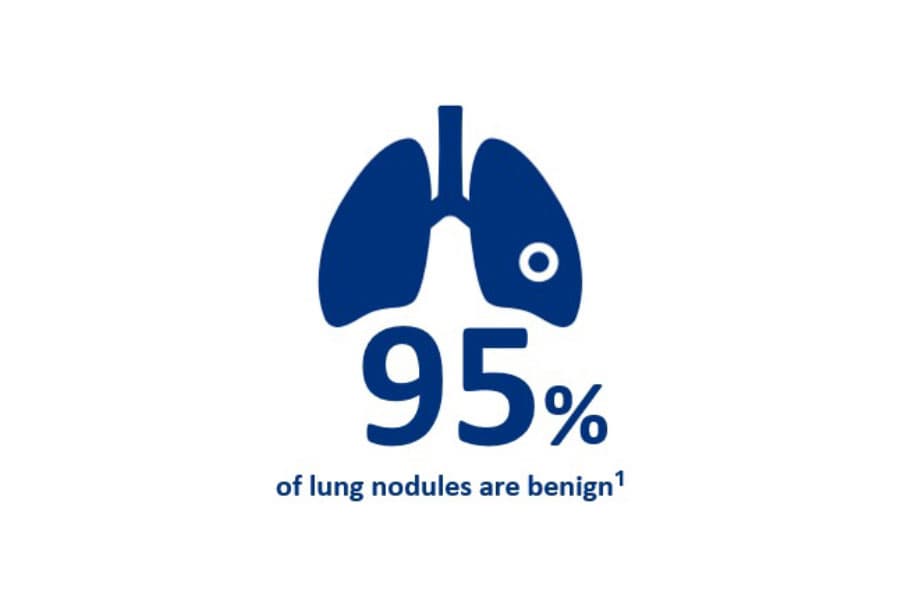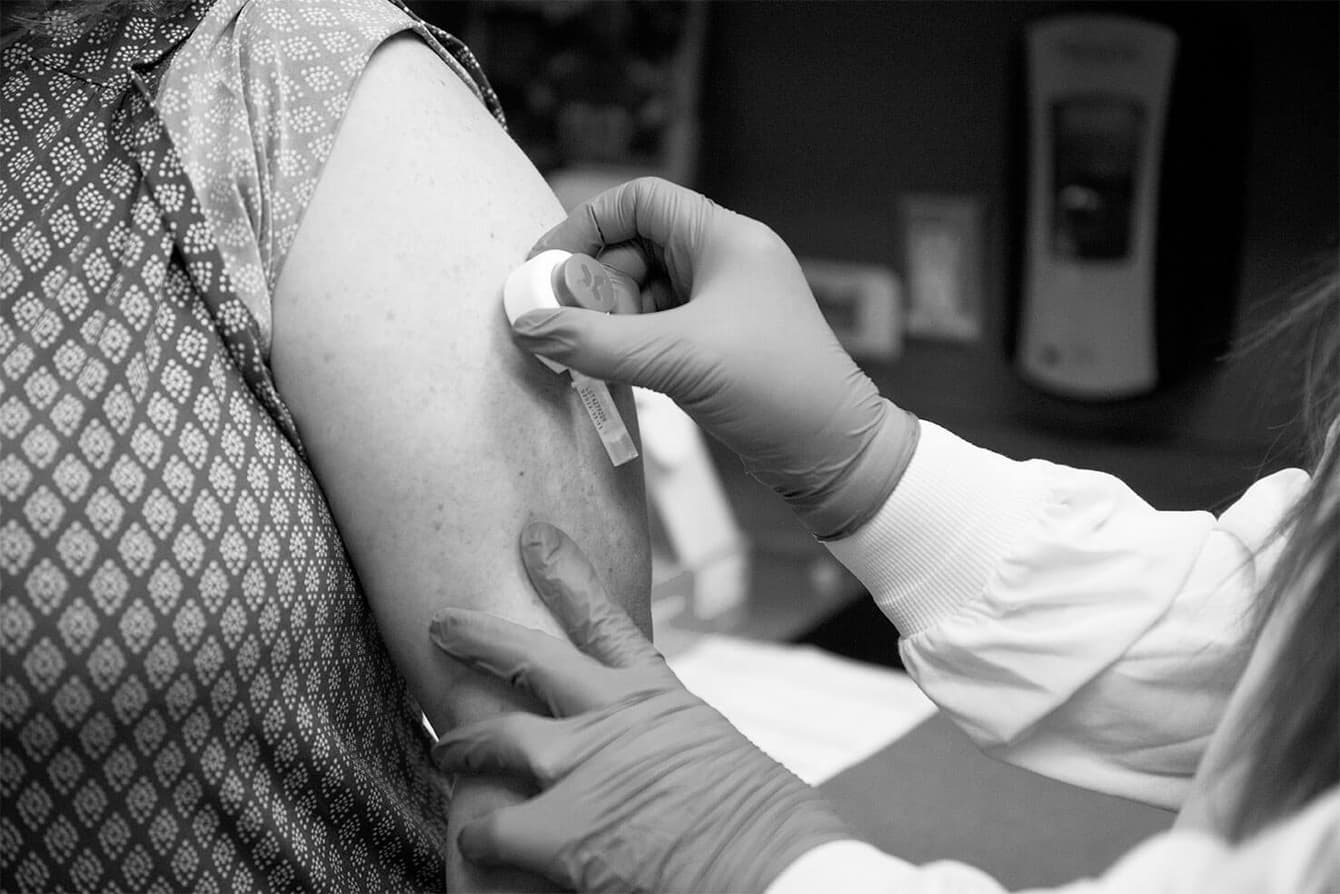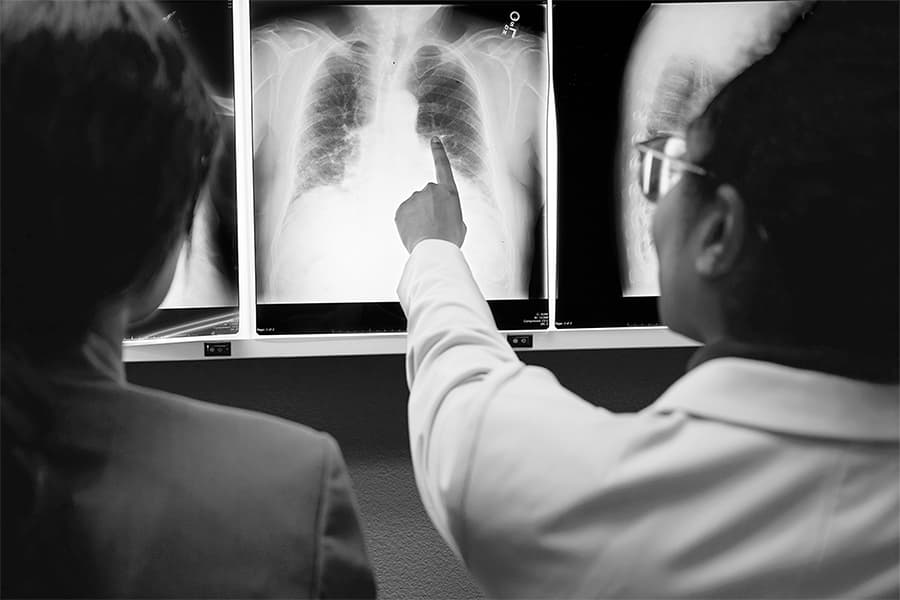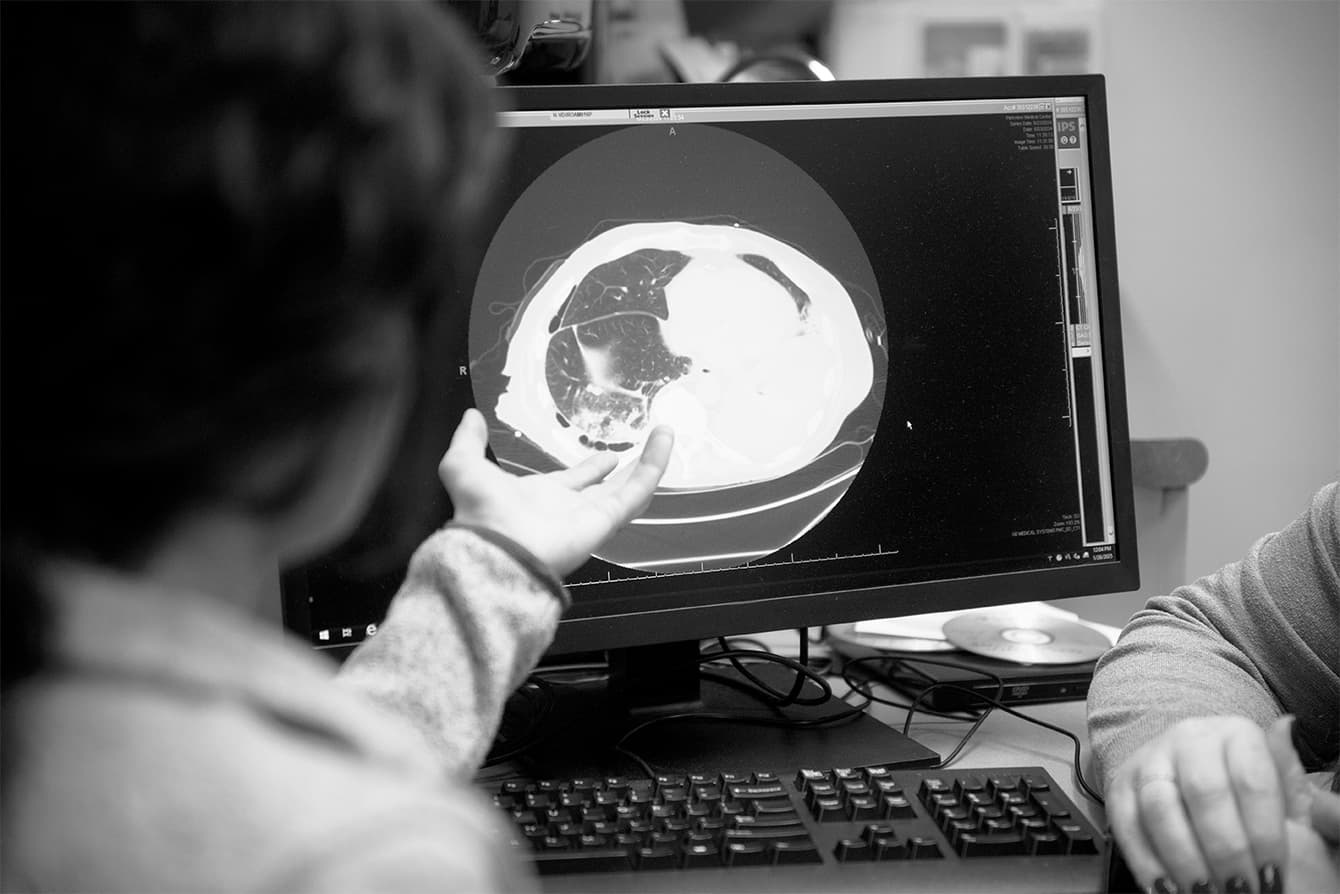
A simple blood test to better understand your lung nodule's risk of cancer

I have a lung nodule. Should I be worried?
Being diagnosed with a lung nodule can be scary. Luckily, 95% of nodules are benign, meaning they are not cancerous. However, it’s important to have your lung nodule evaluated by your provider to better understand your risk of cancer. Even if a nodule is small, it’s worth evaluating. Detecting lung cancer at Stage I improves 5-year survival by 8x2.
Click the link below for additional information on lung nodules.
Click the link below for additional information on lung nodules.

How do Nodify Lung tests help assess my risk?
Nodify Lung tests are a simple blood test that measure biomarkers in your blood, helping further classify your nodule’s risk of cancer. These tests help your physician determine appropriate next steps for management, such as CT surveillance or a diagnostic biopsy3.

How do I determine the risk of my lung nodule?
Your doctor will use certain characteristics of your lung nodule to indicate the chances that it might be cancerous. Physicians use this information to help assess your risk, which helps to guide the next steps for managing your lung nodule.
Nodify Lung tests may help you and your doctor
Avoid Procedures6
Reduce the need for unnecessary procedures like biopsy if your nodule is benignDecrease Anxiety5
Reduce anxiety in your treatment decisions so you can move forward with more confidenceWith Early Identification4
Identify lung cancer earlier
Are Nodify Lung tests right for me?
Your doctor will determine whether Nodify Lung tests are right for you using specific information about your health history and images of your lung nodule. If you’re unsure what to ask your doctor regarding your lung nodule during your next visit, download our discussion guide below.
Biodesix Access Program
Biodesix is committed to making our blood-based tests available to all patients
Through the Biodesix Access Program, we provide comprehensive billing services and affordability options for patients. We offer every patient services such as eligibility and benefits, prior authorizations, claims billing, denial management and appeals, interest-free payment plans, and financial assistance for those who qualify. Click here to complete the online Biodesix Financial Assistance Application.We work with all insurance providers to cover Biodesix testing
Original Medicare Part B & Medicaid
Testing is $0 out-of-pocket for covered claimsMedicare Advantage & Private Insurance
Out-of-pocket test costs vary based on the deductibles, coinsurance, or copays of your planQuestions?
Contact us at clientservices@biodesix.com or 1-866-432-5930
- Mazzone PJ, Lam L. Evaluating the Patient with a Pulmonary Nodule: A Review. JAMA. 2022;327(3):264-273
- State of Lung Cancer 2023 Report. American Lung Association.
- Springmeyer et al. ATS Annual Meeting, May 14-19, 2021; San Diego, CA
- Massion et al. JTO. 2017; 12(3): 578-584.
- Kheir et al. J Thorac Dis. 2023. 15(7):3557-3567.
- Pritchett et al. (2023) Assessing a biomarker’s ability to reduce invasive procedures in patients with benign lung nodules: Results from the ORACLE study. PLoS ONE 18(7): e0287409. https://doi.org/10.1371/journal.pone.0287409
